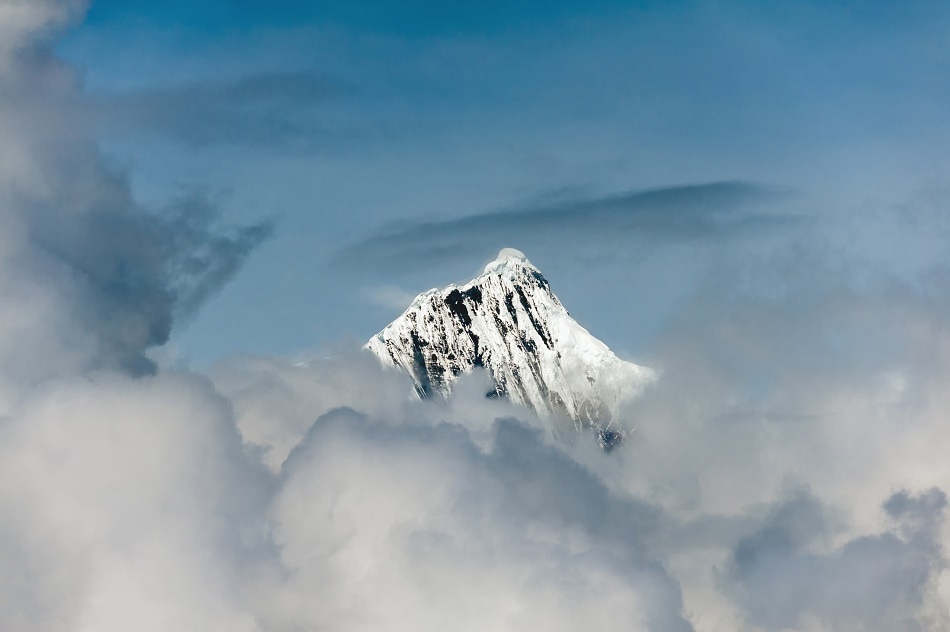
Image credit: Niccolo Bertoldi / Shutterstock.com
The lesser known Third Pole exists in Asia, connecting eight countries and encompassing 10 of the largest rivers in the world, the area of the Himalaya-Hindu Kush mountain range and the Tibetan Plateau is home to ice fields so vast they provide the largest water reserve after the Arctic and Antarctic (about 15% of all snow and ice globally).
The Brahmaputra, Indus, Ganges, Mekong and Yellow rivers find their homes in the Third Pole, contributing to the major resource of not only drinking water, but irrigation for farming and energy in the form of hydropower to 20% of the world’s population.
However, the world’s Third Pole is under threat. A recent report has predicted that it will take only 80 years for two-thirds of the glaciers in this area to disappear entirely. This would be disastrous not only for the inhabitants of the region, but also for the rest of the world who depend on exports of food and clothing that rely on the Third Pole's water source as part of their production process.
The famous Khawa Karpo mountain, the highest peak of the Meili mountain range, is encompassed by the Third Pole region. Shrouded in legend, Khawa Karpo is believed to be the home of the holiest protective warrior god. Since the ice at the foot of Khawa Karpo has faded in recent years, the local Tibetan villagers have attributed the tragic loss to the behavior of mankind, believing dishonors such as rejecting prayer, greed and pollution to be the root of the shrinking glaciers.
The spiritual importance of the mountain range has made it difficult for scientists to thoroughly study the area, putting up a barrier to gaining full data that would help understand the extent and rate of the loss. In some key areas, the locals forbid scientists to study the glaciers, and in addition, the Indian government has been known to keep their data secret.
Fortunately, researchers are finding ways to overcome this. Real-time data on ice shrinkage is being provided by satellite images, including images collected from declassified spy-satellites from the cold war. Evidence from these images has informed scientists of the catastrophic loss the glaciers have already suffered, approximately a quarter of the ice has diminished since the 1970s. In addition to this, it has been uncovered that the rate of ice loss is currently double the rate of loss experienced between 1975 and 2000, equivalent to half a vertical meter of ice per year.
The Third Pole region has suffered a lack of focus in previous environmental reports. A 2007 report predicted that the entirety of the Himalayan glaciers would have disappeared by 2035. The prediction was uncovered to have no statistical backing and was based on a mere anecdote, leading to subsequent reports shying away from the issue.
Scientists are attributing the dramatic loss of ice to several factors. The temperature of the region is elevating at a rate three times faster than the global average. It is predicted that if emissions are not reduced, then the temperature will increase a further 5oC in this region.
The climate crisis you haven’t heard of.
Philippus Wester, Chief scientist, The International Centre for Integrated Mountain Development (ICIMOD)
In addition to CO2 emissions, black carbon has also been identified as a factor adding to the rate of ice loss. Black carbon is responsible for maintaining extra energy at the earth’s surface, adding to warming. The Third Pole’s Mingyong glacier is covered in black carbon, likely from air pollution generated in the Indo-Gangetic Plains.
The impact of all this warming and melting of glacial ice is leading to a shortage in water in the Third Pole region. Springs are dying out because glacial meltwater has reduced. Flooding has also become more prevalent, pollution has increased, and growth in the agriculture sector will further add to these problems.
To overcome these issues, climate change needs to be a main focus. However, local communities are also tackling this problem by constructing artificial glaciers through diverting melting ice to runoff towards shaded locations where it can refreeze.
Disclaimer: The views expressed here are those of the author expressed in their private capacity and do not necessarily represent the views of AZoM.com Limited T/A AZoNetwork the owner and operator of this website. This disclaimer forms part of the Terms and conditions of use of this website.